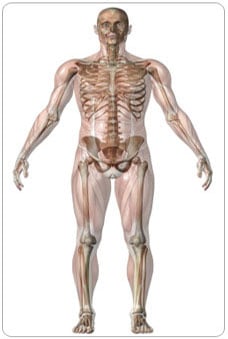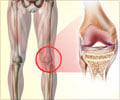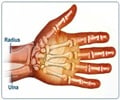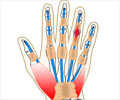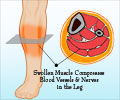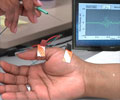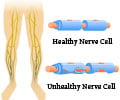Causes of Carpal Tunnel Syndrome
Carpal tunnel syndrome is majorly work-related cumulative trauma of the wrist, commonly caused by strain placed on the hand. When you bend your wrist, to a right angle, the carpal tunnel becomes narrower. Most of the activities, from playing a guitar to typing, having lunch to pushing a swing, require bending of wrist. Repetitive bending or keeping your wrist bent for prolonged periods of time compresses the median nerve, and results in carpel tunnel syndrome. Just as stepping on a hose slows the flow of water through a garden hose, so compression on the median nerve fibers by the swollen tendons and thickened ligament slows down the transmission of nerve signals through the carpal tunnel. Intensity, frequency, and duration of work activity and their relationship to carpal tunnel syndrome are unknown.
People at risk include those who use computers, carpenters, grocery checkers, assembly-line workers, meat packers, musicians and mechanics as the related activities involve repetitive wrist flexion and extension. Activities like gardening, needlework, golfing and canoeing can also sometimes bring on the symptoms.
Six key risk factors in the workplace for development of carpal tunnel syndrome include:
- repetition,
- high force,
- awkward joint posture,
- direct pressure,
- vibration,
- prolonged constrained posture.
Hereditary maybe a risk factor for the condition and females are at 3 times higher risk then men for developing the condition. Hormonal changes associated with menopause also makes a women more prone to Carpel Tunnel Syndrome. Common conditions where this condition is seen includes:
- Pregnancy
- Rheumatoid arthritis
- Wrist Injury
- Endocrine disorders like diabetes and hypothyroidism
- Wrist fracture
- In some cases, presence of a tumor or growth of there might be a tumor in the wrist. This could also cause compression to the median nerve.
- Some other reasons that might result in the inflammation of tendons are hypothyroidism, pregnancy and diabetes.


